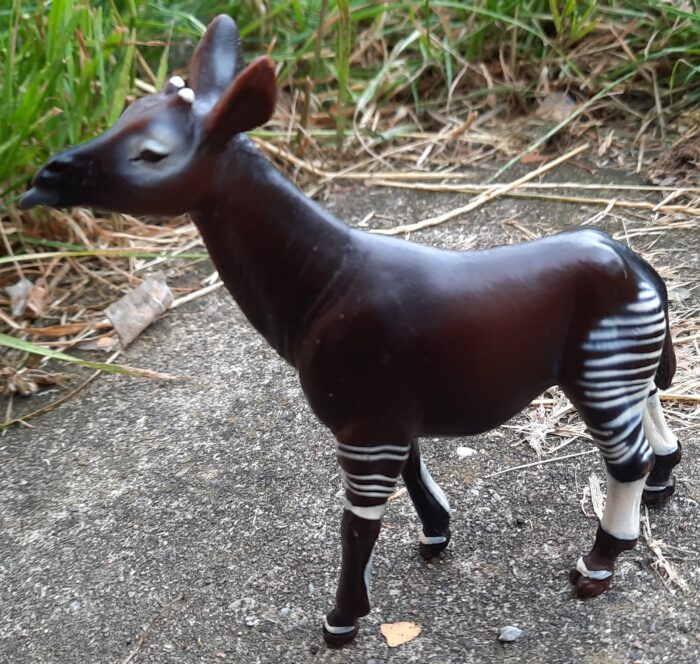In this edition of the “Savannah Summer”, we head to the Republic of the Congo to see an incredibly rare and fascinating animal, the Okapi (Okapia johnstoni). Despite the stripy legs, this animal is related to the giraffe, as can be seen by it’s ossicones and long, prehensile tongue.
Author: Sirenia
 I'm Daniel Waite (aka ‘Sirenia’ on the Animal Toy Blog/Forum and ‘Indohyus’ on the Dinosaur Toy Blog/Forum). Ever since I was young, I would love any chance to see animals. Whether it’s visiting Safari parks, zoos, farms or local parks, I would love seeing animals around, doing what they did. Though I skewed towards ancient species later on, I still kept my love for extant species alive. I’ve had many pets, including dogs (my greyhound River is in the photo), cats, ferrets, mice and goldfish. I liked collecting many animal figures over the years, often from my trips to zoos and safari parks, resulting in a vast menagerie of models. As a result, my reviews can come with a heavy feeling of nostalgia. Hope you enjoy!
I'm Daniel Waite (aka ‘Sirenia’ on the Animal Toy Blog/Forum and ‘Indohyus’ on the Dinosaur Toy Blog/Forum). Ever since I was young, I would love any chance to see animals. Whether it’s visiting Safari parks, zoos, farms or local parks, I would love seeing animals around, doing what they did. Though I skewed towards ancient species later on, I still kept my love for extant species alive. I’ve had many pets, including dogs (my greyhound River is in the photo), cats, ferrets, mice and goldfish. I liked collecting many animal figures over the years, often from my trips to zoos and safari parks, resulting in a vast menagerie of models. As a result, my reviews can come with a heavy feeling of nostalgia. Hope you enjoy!All reviews by this author
Oryx (Wild Animals by Papo)
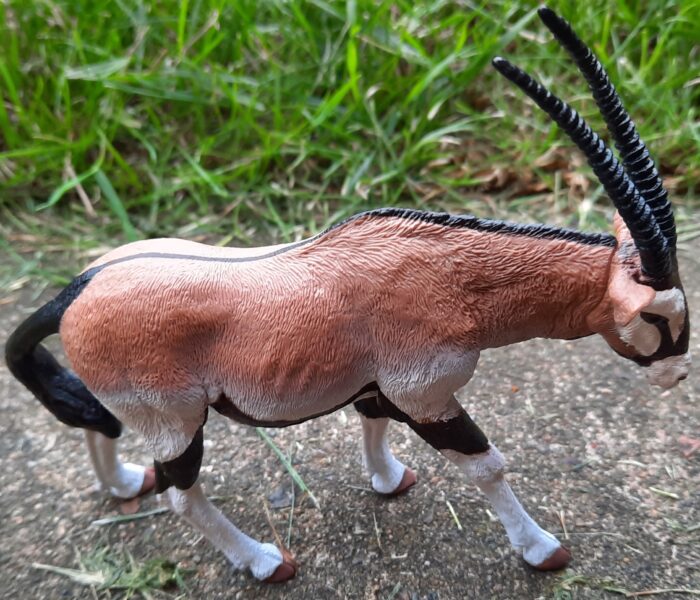
Carrying on with the “Savannah Summer”, we head to the Kalahari, the land of great thirst. The precipitation is low, so survival can be tricky. Even still, life finds a way, and even relatively large species can call the area home. Take the gemsbok or oryx (Oryx gazella), a large species of antelope, which is a native to this large, often dry expanse.
African Bush Elephant, pair (Noah’s Pals by Caboodle! Toys LLC)
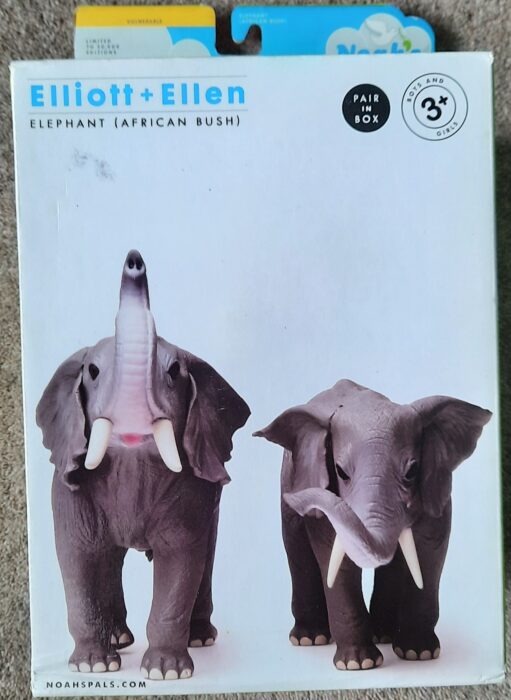
Continuing on with my “Savannah Summer”, when on safari, you want to see the largest species a country have to offer. And when it comes to Africa, there is no larger than the largest land animal on earth, the African bush elephant (Loxodonta africana). These powerful proboscidians populate a large section of Africa, though their numbers are in decline as a result of poaching for ivory made from their tusks.
Lion, pair (Noah’s Pals by Caboodle! Toys LLC)
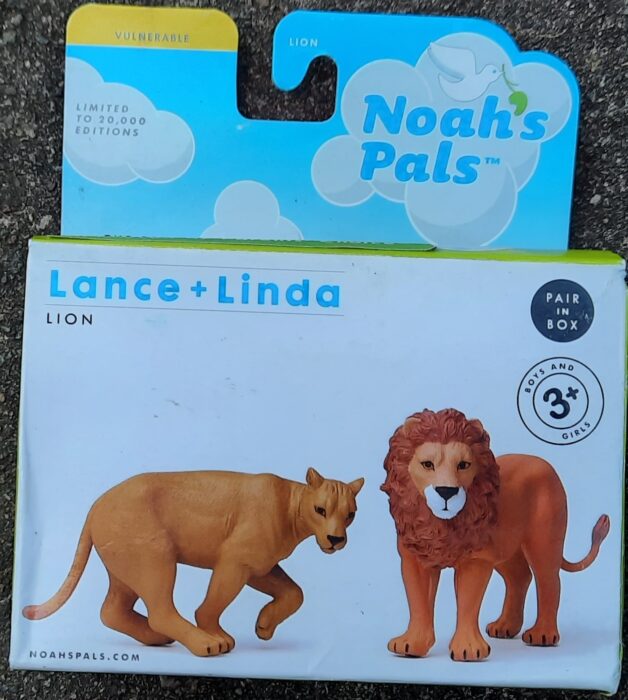
Welcome back to the “Savannah Summer”! Hot weather often makes people want to find a nice, shady spot and just relax, do more later as the temperature dips. This method is also used by the largest mammal predator in Africa, the lion (Panthera leo). Like any cat, they are masters of lazing around, as well as hunting.
Zebra, Pair (Noah’s Pals by Caboodle! Toys LLC)
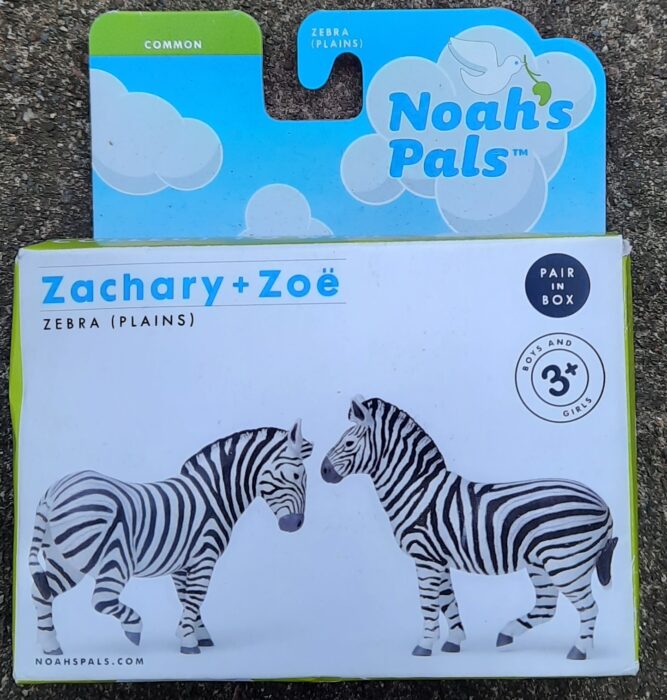
Well, we are in June, the temperature is rising and the weather is becoming sunnier. To celebrate the season, I will be looking into the animals that live on one of the hottest continents on earth, Africa. From the Sahara to the Serengeti, from the Congo to Botswana, I will be reviewing animals from across this amazing place.
Frog, Male (AAA)
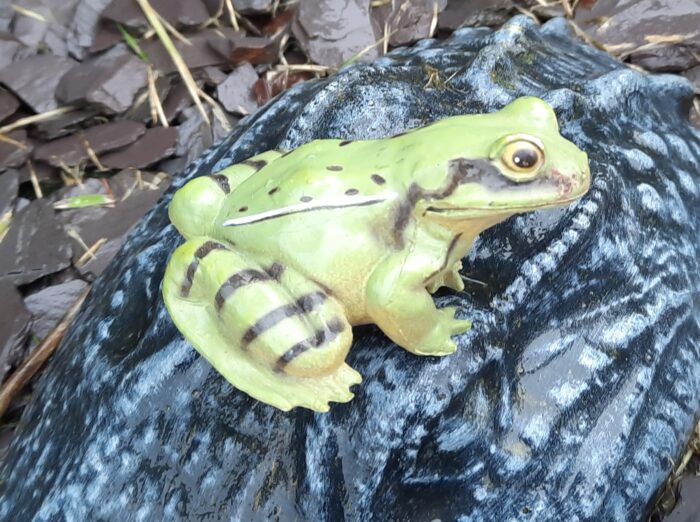
As the first group to leave the waters to become, at least partially, terrestrial, amphibians have had a long and intriguing evolutionary history. Though no longer the mighty giants they were once, they still exist in a multitude across the globe, in spite of the many trials they face from disease and humanity.
Mud Crab (AAA)
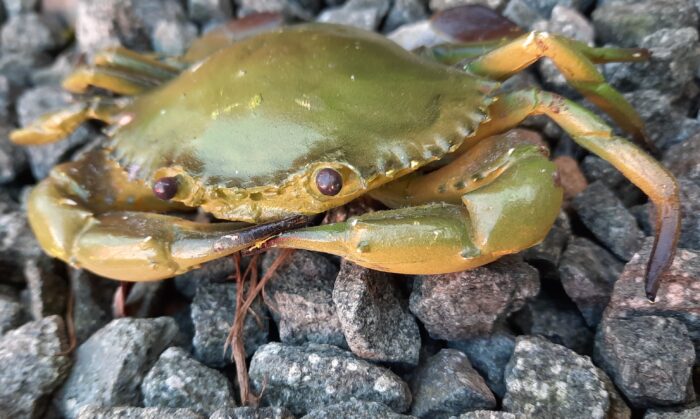
Scuttling along shorelines, rummaging in the surf or sand, crustaceans are well known beach living animals, especially the crab. With their pincers, shells and multiple legs, they are well known critters, and have many figures made of them. Here, we see one of many examples made by AAA.
As usual, discerning a species is incredibly tricky, as this is just labelled “crab”.
Marsupial Mole (Yowies UK Series 1 by Cadbury)
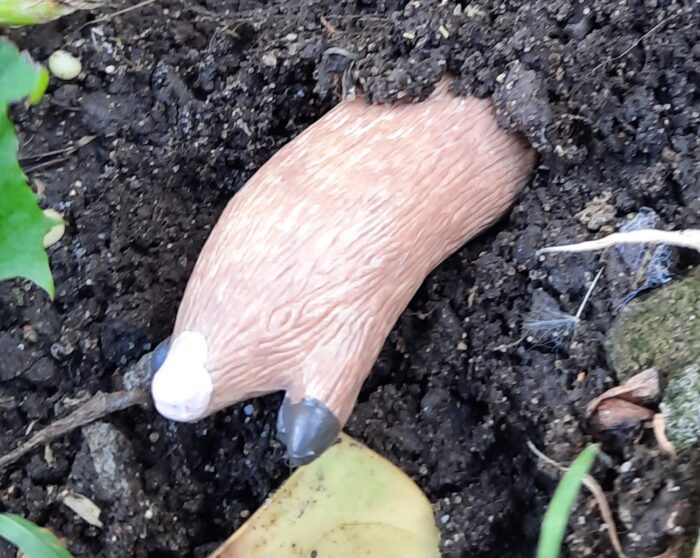
If there is one evolutionary process I love, it’s convergent evolution, where two completely different species evolve the same adaptations to deal with similar environments. Whether it’s the tenrecs of Madagascar looking like hedgehogs, or the similarities between fish, dolphins and ichthyosaurs, it’s impressive how evolution can take these similarities and apply it to different groups.
Galapagos Tortoise (Wild Animals by Papo)
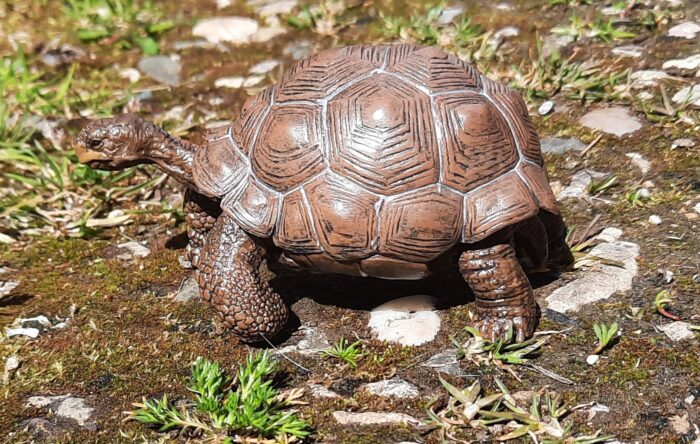
The Galápagos Islands are an incredible biome, full of an array of different species, perfectly adapted for their environment. This resulted in Charles Darwin developing his theories of evolution. It also resulted in a lot of damaged to this ecosystem, as the animals were decimated by the introduction of European animals and hunters.
Tiger, Male Lying (AAA)
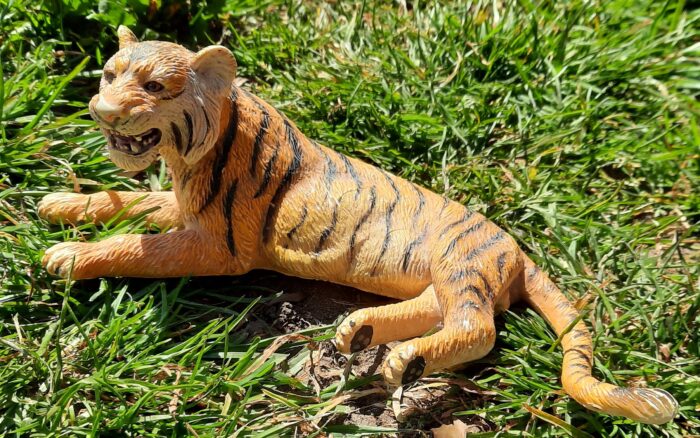
When most think of big cats, they probably picture these powerful carnivores majestically tracking their prey in the undergrowth, or roaring to ward off other predators. At the end of the day though, they are still cats, and there is one thing that makes them very good at: sleeping. The mighty tiger (Panthera tigris) is no exception, happy to lounge around when not hunting.
Pronghorn, buck (Wild Safari North American Wildlife by Safari Ltd.)
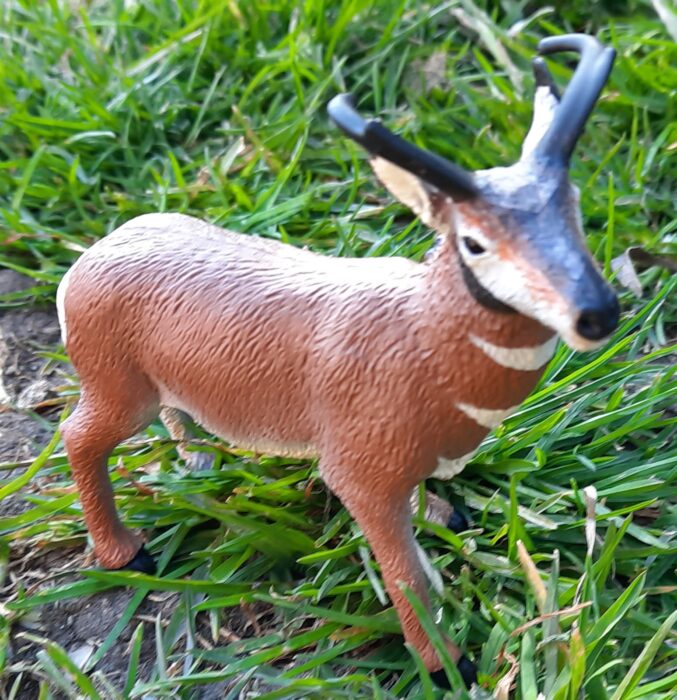
Parallel evolution has produced some interesting creatures. Antelopes in the “Old World” mix speed and antlers in order to keep themselves safe, and this combination can be seen in the pronghorns (Antilocapra americana). An impressive set of antlers is matched with an even more incredible land speed, keeping them safe from predators, ancient and modern.
Japanese Animals (Colorata)
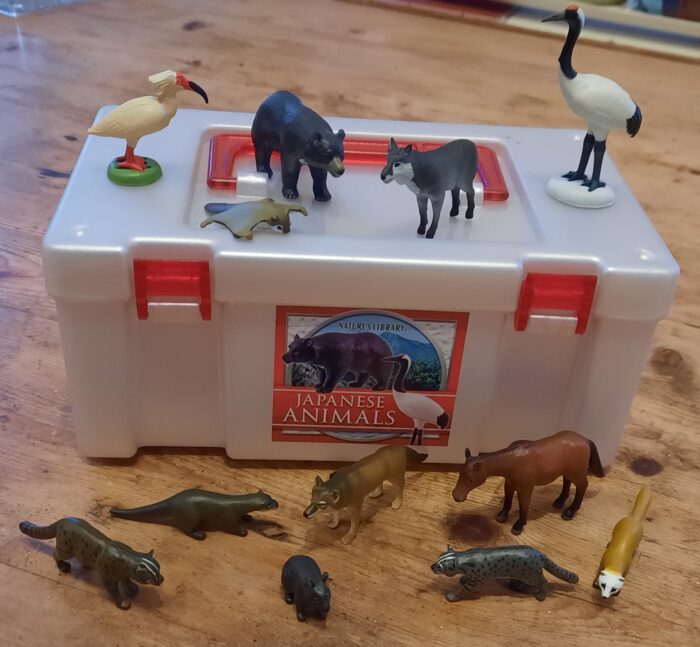
Well, here we are. I’ve reached a big milestone, my 50th review! I want to thank everyone who read, rated and commented on my reviews to this point. I also want to thank bmathison1972 for editing my work. For this milestone, I wanted to cover something well made and on the more expensive side, so I chose the Japanese Animals set by Colorata.

